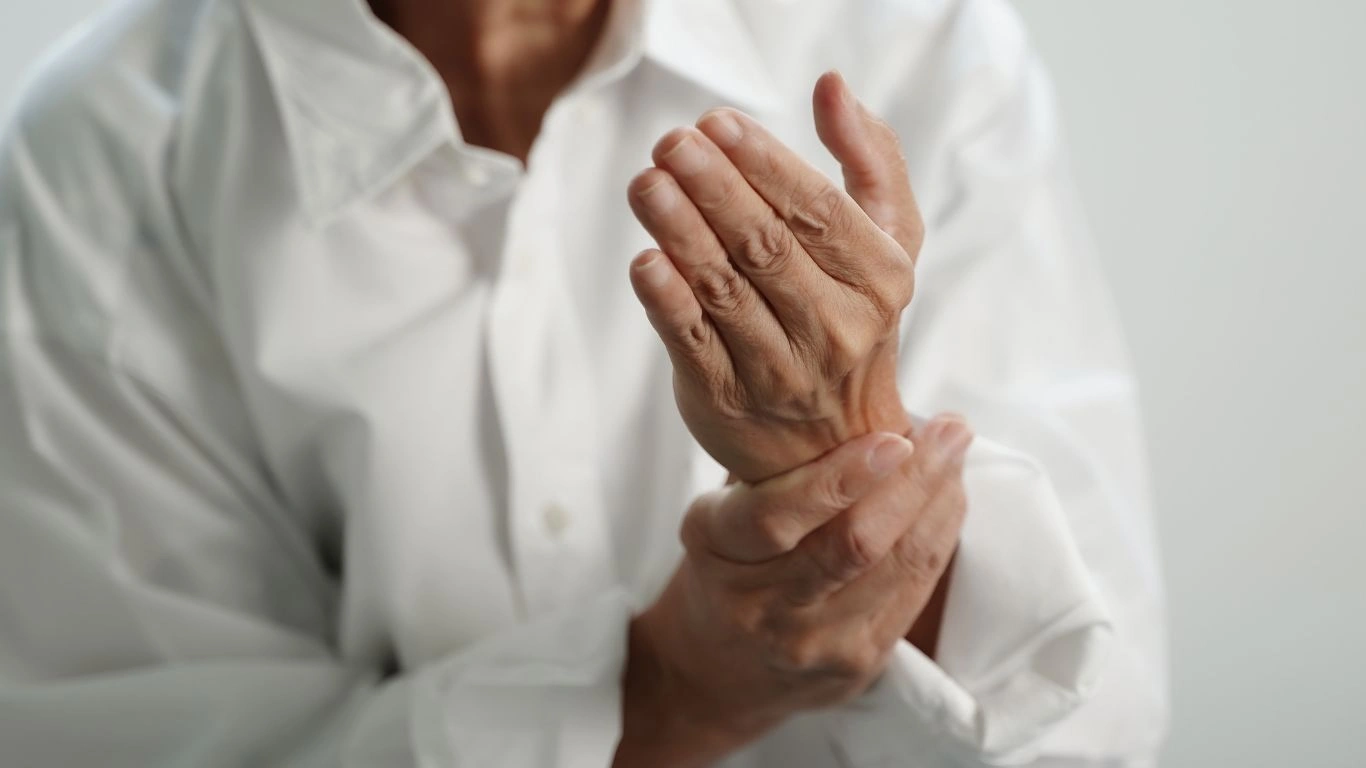How to Stop Rheumatoid Arthritis from Progressing Naturally and Fast
Let me tell you, as a rheumatology nurse practitioner who’s spent countless hours walking patients through flares, stiffness, and overwhelming fatigue, I’ve had one question come up again and again: how to stop rheumatoid arthritis from progressing. It’s not just a medical concern—it’s deeply personal. When you’re the one waking up with aching joints or watching someone you care about struggle to open a jar or climb stairs, this question hits differently. So let’s talk about it in a real, down-to-earth way. Not just the textbook stuff—I’m talking about what actually works, what doesn’t, and how to make sense of it all without losing your mind.
What Exactly Is Rheumatoid Arthritis, Really?

Okay, before we dive into ways to stop it from progressing, let’s rewind a bit. I can’t tell you how many times people confuse rheumatoid arthritis (RA) with osteoarthritis (OA). They’re not the same. RA is an autoimmune condition, which means your immune system is attacking your own body—mainly the joints, but it can mess with your lungs, heart, eyes, and more.
So unlike OA, which is more of a wear-and-tear thing, RA is inflammatory. Think of it as your immune system going rogue, setting off fire alarms in places that don’t need them. And the earlier you catch it and get a grip on it, the better chance you have at slowing it down—or in some cases, putting it into remission.
How to Stop Rheumatoid Arthritis from Progressing: The First Steps Matter

So here’s the real talk: stopping RA from progressing isn’t about one magic thing. It’s a combo of early diagnosis, effective treatment, lifestyle changes, and—this part’s often overlooked—mindset. I’ve seen patients go from struggling to dress themselves to hiking with their grandkids. No, it’s not a miracle. It’s consistency, education, and getting the right help early on.
1. Early Diagnosis Is Everything
If I could shout one thing from the rooftops, it’s this: don’t wait. The first 6-12 months after symptoms start are crucial. This period is what we call the “window of opportunity.” During this time, aggressive treatment can significantly reduce joint damage and long-term disability.
Here’s what you should be on the lookout for (and tell your provider):
- Persistent morning stiffness lasting more than an hour
- Swelling in small joints—especially fingers, wrists, and toes
- Symmetrical joint pain (both wrists or both knees, for example)
- Fatigue that doesn’t make sense, like crashing by noon
Sound familiar? Then don’t play the wait-and-see game. Push for blood work (RF, anti-CCP), imaging, and a rheumatology referral. The sooner you start treatment, the more you preserve joint function—and your lifestyle.
2. Disease-Modifying Drugs (DMARDs): Your Frontline Defense
Let’s bust a myth: RA medications aren’t just for when things get bad. They’re meant to prevent things from getting bad in the first place.
DMARDs, especially methotrexate (the MVP of RA drugs), are used to halt disease progression. Biologics and JAK inhibitors are newer options, often used when DMARDs alone don’t do the trick. Are they perfect? Nope. Do they help prevent permanent joint damage and deformity? Absolutely.
I’ve had patients scared to take them because of side effects they read online. And sure, every med has risks—but so does uncontrolled RA. What’s worse: a weekly pill with monitoring, or a lifetime of joint damage and disability? That’s the kind of honest conversation I always have in the clinic.
3. Don’t Ignore the Lifestyle Factor
Here’s where I love stepping in as a nurse practitioner—because meds aren’t the whole picture. You can have the best rheumatologist and still feel stuck if your daily habits are working against you.
Some RA-friendly lifestyle shifts I’ve seen make a real difference:
- Anti-inflammatory diet: Think more fish, leafy greens, berries, turmeric, and less sugar and processed junk.
- Movement matters: No, not CrossFit. Gentle yoga, swimming, and physical therapy-guided exercises can improve mobility and reduce stiffness.
- Stress management: Cortisol (your stress hormone) loves to stir the RA pot. Meditation, therapy, journaling—find what works for you.
- Sleep like it’s your job: Seriously. Poor sleep = more flares. Aim for 7-9 hours, and talk to your provider if pain is keeping you up.
Real Stories from Real Patients

I once worked with a woman in her early 40s who came in barely able to type. Her fingers were so swollen she joked that she looked like she was wearing invisible mittens. We started her on methotrexate, coordinated with a nutritionist, and got her into hand therapy. Six months later, she brought in homemade cookies she’d baked herself—something she hadn’t done in over a year. That’s the kind of change we’re talking about here.
This stuff works when you work it. And no, it’s not always linear—there are setbacks, flares, and frustrations. But knowing that there’s a plan, a path, and a support team makes all the difference. Trust me, I’ve seen it. Again and again.
Let’s Talk About Flare-Ups: Why They Happen and What to Do

Alright, let’s get into one of the trickiest (and frankly most annoying) parts of living with RA: the flare-ups. You know the drill—you’re cruising along, doing fine, and then out of nowhere… bam. The pain, the swelling, the fatigue, all over again. It can feel like your body betrays you. And honestly, it’s one of the reasons people feel hopeless about how to stop rheumatoid arthritis from progressing. But here’s the deal: flare-ups don’t mean you’re losing the battle. They’re just part of the ride.
Now, from my experience in clinic, there’s rarely just *one* reason a flare happens. It could be stress, an infection, weather changes, overdoing it physically—or sometimes, no clear cause at all (which is the worst, I know).
Flare Management Basics
When a flare hits, my first piece of advice is simple: don’t panic. Having a flare doesn’t mean your meds have failed. But you do need a plan. Here’s what I walk my patients through:
- Rest the joint, but don’t completely immobilize it – Gentle movement prevents stiffness from becoming permanent.
- Apply heat or cold – Heat usually works better for stiffness, while cold is great for reducing swelling and pain.
- Stay on top of your meds – Don’t skip your DMARDs or biologic unless your provider tells you to. Some patients panic and stop everything, which usually backfires.
- Track your symptoms – I tell my patients to use a journal or app to note flare triggers, intensity, and duration. This helps spot patterns over time.
And here’s a tip straight from the clinic trenches: have a “flare kit” ready. A heating pad, ice pack, NSAIDs (if okay with your doc), easy meals in the freezer, and a cozy setup so you’re not scrambling when you feel crummy.
Rheumatoid Arthritis and Mental Health: The Overlooked Piece

This one hits close to home for so many of my patients, and it’s something we don’t talk about enough. Living with a chronic illness like RA takes a mental toll. I’ve had patients who seem totally fine on the outside but privately tell me they’re dealing with depression, anxiety, even grief over the life they feel they’ve lost.
Here’s the thing: mental health support is not optional when it comes to managing RA. Chronic inflammation affects brain chemistry. Plus, living with pain and fatigue every day? That’ll wear anyone down.
Ways to Support Your Mind While Supporting Your Joints
- Talk therapy – A licensed therapist can help you unpack the emotional weight of chronic illness. Cognitive behavioral therapy (CBT) is especially helpful for pain coping.
- Support groups – Whether in-person or online, connecting with others who “get it” can be incredibly healing.
- Mind-body techniques – Meditation, mindfulness, deep breathing—these can lower stress and even reduce flare frequency, in my experience.
- Be honest with your care team – If you’re struggling emotionally, say something. We’re here for all of you, not just your joints.
There’s no shame in needing help. Actually, seeking support shows strength and self-awareness. One of my longtime patients recently started journaling daily—not just about symptoms, but emotions. She told me it’s helped her feel more in control, even when her body isn’t cooperating.
Supplements and Natural Supports: Helpful or Hype?

Okay, let’s address the elephant in the room: natural remedies. Almost every RA patient I’ve worked with asks me at some point, “What about turmeric?” Or fish oil. Or CBD. Or some new thing they saw on TikTok.
So here’s the no-nonsense breakdown, nurse practitioner to reader:
The “Worth-Trying” Category
- Turmeric (Curcumin) – Has anti-inflammatory properties. I’ve seen some patients report reduced joint pain when used consistently. Just check for interactions with other meds, especially blood thinners.
- Omega-3 fatty acids (fish oil) – There’s some decent evidence that omega-3s can help reduce morning stiffness and pain. Bonus: they’re heart-healthy, and RA increases cardiovascular risk.
- Vitamin D – A lot of RA patients are deficient, and that can worsen fatigue and immune imbalance. Worth checking your levels and supplementing if needed.
Proceed with Caution
- CBD – Anecdotally, some people swear by it for sleep and pain. Research is still emerging. Go for quality brands and avoid anything sketchy or unregulated.
- Essential oils, teas, mystery powders – Some may be harmless, others might interfere with your meds. Always talk to your healthcare provider first. Seriously—I’ve seen some wild interactions.
Bottom line? Supplements can sometimes help, but they’re not a substitute for proven RA treatments. Use them to support your care, not replace it. And be skeptical of anything promising a “cure.” If there were one, trust me, we’d all be shouting it from the rooftops.
The Power of a Rheumatology Care Team
One of the best things I’ve seen over the years is how much better outcomes are when patients have a full support team. And that doesn’t mean just one brilliant rheumatologist (though I’ve worked with a few!). It’s about collaboration: rheumatologist, nurse practitioner (hi, that’s me), physical therapist, sometimes a dietitian, and even a mental health counselor.
When we all work together—and when you, as the patient, feel empowered and informed—progress slows, and quality of life goes up. And that’s really what we’re aiming for, right? Not just fewer swollen joints, but more mornings where you wake up and feel like yourself again.
In the next part, we’ll go deeper into advanced treatment options, long-term monitoring, and patient self-advocacy, because stopping RA progression isn’t a one-and-done thing—it’s an ongoing journey. And you’re not walking it alone.
Advanced Treatment Options for Tougher Cases

Let’s be real—sometimes, the standard treatments like methotrexate just aren’t cutting it. I’ve seen patients follow everything by the book—meds, lifestyle, therapy—and still struggle with ongoing joint inflammation and fatigue. And that doesn’t mean you’ve failed. It just means we need to go deeper into the toolbox.
This is where we talk about biologics and targeted synthetic DMARDs (like JAK inhibitors). These aren’t just “next level” drugs—they’re game-changers for a lot of folks. They work by targeting very specific parts of the immune system, kind of like using a sniper rifle instead of a shotgun. More precise, more powerful (but yes, also requiring a bit more monitoring).
Biologics: What’s the Buzz?
Here’s a quick breakdown of the types of biologics commonly used in RA:
- TNF inhibitors – Examples include etanercept and adalimumab. These were the OG biologics and are still widely used.
- IL-6 inhibitors – Like tocilizumab. Great for people whose RA involves a lot of systemic inflammation and elevated CRP levels.
- B-cell and T-cell inhibitors – Target the actual immune cells behind the attack. Rituximab is a common one here, especially when other options fail.
I remember one patient in her late 50s who had been on multiple DMARDs and was still waking up swollen every single morning. We transitioned her to a biologic, and within three months, her labs were normalized and she told me she’d finally been able to go back to her quilting club—something she hadn’t done in almost two years. It was such a simple joy, but for her, it was everything.
JAK Inhibitors: Small Pills, Big Impact
These are a newer class of oral medications like tofacitinib and upadacitinib. Unlike biologics, which are injections or infusions, JAK inhibitors are pills—making them super appealing for folks who aren’t fans of needles. But they come with their own set of risks, especially around infection and blood clots, so regular labs and close follow-ups are a must.
Honestly, I’ve had some great success stories with these, especially in patients who’ve bounced between biologics and still felt stuck. Again, it’s all about personalization—what works for one person might not for another. That’s why shared decision-making is so critical.
Monitoring Your Progress (Because This Isn’t a “Set It and Forget It” Kind of Deal)

One thing I really emphasize in clinic is that RA management isn’t static. We don’t just prescribe a med and send you off into the sunset. Nope—this is a dynamic process. It evolves over time, and you’ve got to stay engaged with it.
What We Keep Tabs On
- Lab work: ESR, CRP, CBC, liver/kidney function—depending on your meds, we might check these monthly or quarterly.
- Imaging: X-rays, ultrasounds, or MRIs help us catch joint damage early—even before you feel it.
- Patient-reported outcomes: Pain scales, fatigue levels, mobility tracking—what *you* say matters just as much as what the labs show.
I always tell my patients, “You’re the expert of your body. I’m just here to help interpret the signals.” That partnership? It’s golden. And it makes all the difference in preventing disease progression long-term.
Becoming Your Own Advocate
Now here’s a little soapbox moment: If you want to know how to stop rheumatoid arthritis from progressing, one of the most powerful things you can do is learn to advocate for yourself. I’ve worked in this field long enough to know that not every patient gets the care they deserve right away. Sometimes it takes pushing for a referral. Sometimes it’s asking for a med change when something clearly isn’t working. And sometimes it’s just standing firm and saying, “I need more help.”
Tips for Speaking Up:
- Come to appointments prepared – Keep a symptom journal or print out questions ahead of time.
- Don’t downplay your symptoms – I can’t help if I don’t know what’s really going on. Be honest, even if you think it sounds minor.
- Ask about options – Treatment isn’t one-size-fits-all. If something isn’t working, it’s okay to ask what else is out there.
- Bring someone with you – A second set of ears can be helpful, especially when discussing complex treatment plans.
You’re not being difficult—you’re being proactive. And that’s how you stay ahead of this disease.
Living Well with RA: The Final Word
If you’ve made it this far, I hope one thing is clear: yes, RA is tough—but so are you. And more importantly, there are real, proven ways to manage it, slow it down, and keep it from taking over your life. I’ve walked alongside hundreds of patients as they learned, adapted, and took control—and I promise, it’s possible.
Progression is not inevitable. You’re not powerless. You just need the right tools, the right support, and a plan that works for *your* body and *your* lifestyle.
And I’ll leave you with this—whether you’re newly diagnosed or deep into your journey, give yourself some credit. Living with RA takes strength. You’re doing better than you think.
Helpful Resources & References
- National Institutes of Health (NIH)
- Health.com
- Centers for Disease Control and Prevention (CDC)
- Arthritis Foundation
- Mayo Clinic
Disclaimer
This content is for informational purposes only and does not substitute professional medical advice, diagnosis, or treatment. Always consult your rheumatologist, primary care provider, or qualified health professional before starting or changing any treatment plan.

Tarra Nugroho is a dedicated Nurse Practitioner with a strong foundation in family and preventive care. She brings both compassion and clinical expertise to her practice, focusing on patient-centered care and health education. As a contributor to Healthusias.com, Tarra translates medical knowledge into clear, empowering articles on topics like women’s health, chronic disease management, and lifestyle medicine. Her mission is simple: help people feel seen, heard, and informed—both in the clinic and through the content she creates. When she’s not caring for patients, Tarra enjoys weekend hikes, plant-based cooking, and curling up with a good health podcast.






